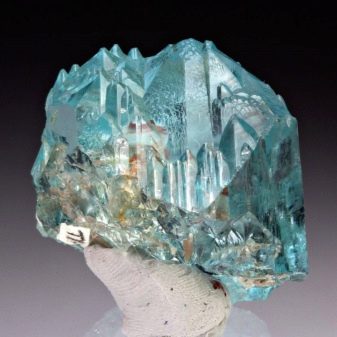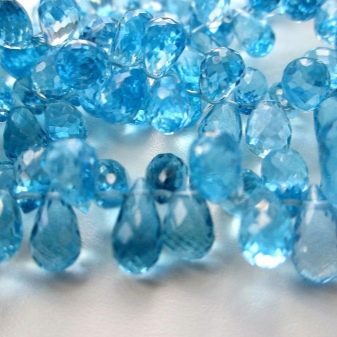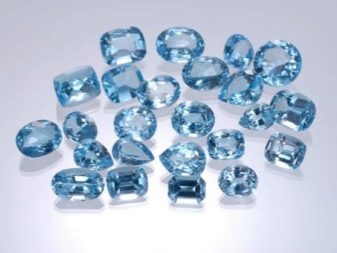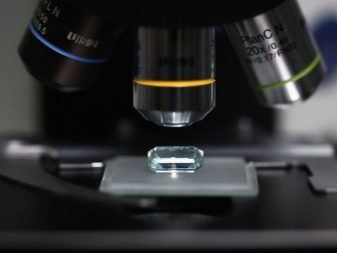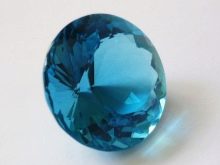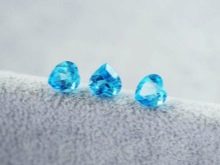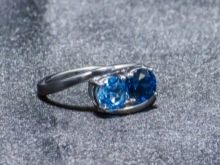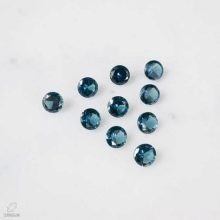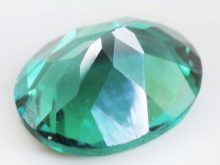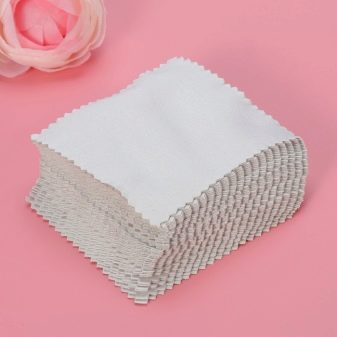Nanotopaz: what is it and how to distinguish a natural stone from a fake?

Topaz is popular with both jewelers and lovers of fine jewelry. This is a rather rare stone, and its deposits were discovered in only a few countries of the world, including Russia. In our country, topaz mined in the Urals.
At the same time, the amount of natural reserves of topaz deposits is limited, since their formation may take more than a million years. The real innovative development of steel nanotopaz.
Description
Nanotopases are a product of the development of Russian scientists. They are synthesized in the laboratory and perfectly copy the shape and structural features of their natural counterparts. The appearance and properties of nanotopazes are so perfect that it is often only specialists who can distinguish them from natural gems. Nanotopases are often called natural stone imitations, since many manufacturers give them out as natural.
Nanotopases in various sources can be called artificial or synthetic, but it would be more correct to call them hydrothermal topazes, since the most common method by which nanotopes are obtained is called hydrothermal.
Its essence lies in the fact that all components, among which there is a crumb of a natural stone, undergo a melting process at a certain pressure, during which their chemical interaction takes place. The result of the reaction is a stone with ideal characteristics.
In addition to hydrothermal, there are other methods of obtaining nanotopazov, such as flux, the method of Verneuil, Czochralski and Bagdasarova. All methods are patented. In the professional environment of jewelers and in jewelry stores one can come across different names of synthesized topazes: nanocrystal, Nanocrystal, Nanogem, Formica nanogem.
Properties
Modern methods of manufacturing nanotopazy allow you to give them special properties, some of which are quite close to the properties of natural stones. Consider these indicators.
- High hardness. The hardness of hydrothermal topaz tends to the value of the hardness of natural stones, which is equal to 8 points on the Mohs scale.
- Lower density compared to natural topaz. Natural topazes are quite heavy stones, and from ancient times they are called heavyweights.
- The absence of cracks, inclusions. Cracks and inclusions are accompanied by a natural mineral. Topaz obtained by the hydrothermal method, it is unusual.
- The perfect shape. The technology of manufacturing nanotopazy allows you to give them the perfect shape and perfect cut.
- Brightness and brightness, no cloud. The hydrothermal method of creating nanotopes provides the stones with a clear and bright shine, close to the ideal performance.
- Color perfection. Nanotopases are much brighter than natural topaz.
The technology of their creation allows you to bring the degree of color saturation to the desired and produce the desired shade.
Differences from natural
Due to the good quality of the artificially created nanotopazes, they are often given out as natural topazes. It is possible to distinguish a natural stone from a fake in the different ways.
- The hardness of natural topaz is higher than that of synthetic, they can scratch the hard surface and even artificially created topaz. This property can be used to distinguish a real mineral from a fake at home.
- Natural topaz, in contrast to a nanotopaz, has a tendency to electrify. In order to verify this yourself, it is necessary to use a woolen cloth and rub it with the stones. If topaz is natural, then it will attract small pieces of paper or hair to itself. Man-made stones do not possess this property.
- The natural mineral heats up much more slowly, than artificial. Therefore, taking it in hand, for quite a long time it will be possible to feel its coolness. Non-natural stone absorbs the warmth of the hands very quickly.
- Nanotopases have a homogeneous structure in contrast to natural topaz, which may have defects and shade heterogeneity. If you have a product with a stone that has an ideal structure and transparency, then this is probably an artificially created mineral. In nature, it is very difficult to detect topaz without defects. Basically, topaz is found in the rock with cracks and inclusions.
- To verify the authenticity of natural topaz, you can use a special solution - methylene iodide. In this solution, the natural stone will go to the bottom, and synthetic topaz will remain on the surface.
- If you can use jewelry weights, you can determine the density of the stone, which tells about the naturalness of the stone. This topaz has a density of 3.4-3.6 g / cm3. Synthetic options usually have a density of two times less.
- Natural topaz can be found by turning it head down. This stone will shimmer and create a game of reflected light. True, there is one condition - topaz must have a special faceting. In any case, if there is a game of color, then we can talk about the naturalness of the stone.
- Natural topaz has a rich color spectrum. It can be transparent, yellowish, green or blue. Green topaz is very rare, is mined in single variants and immediately goes to branded jewelry companies. Most natural topaz, which are used for inlaid jewelry, have discreet and not very bright colors and shades. The color of the nanotopaz is brighter and more pronounced.
- When exposed to ultraviolet light, fading of a natural stone can be observed. However, when placed in a dark place, he returns his shade. An artificially created mineral cannot boast of such a property.
- Natural topaz when changing the direction of light changes its color in contrast to synthetic. This phenomenon is characteristic of yellow and pink stones.
Application
Nanotopazami encrusted jewelry: earrings, rings, pendants, bracelets. Elegant look sets with nanotopazami. Being an excellent substitute for natural stones, synthetic topaz costs much cheaper. This is a great gift for any holiday. Ornaments from nanotopiasis to the face of women of any age. The hydrothermal mineral is encrusted in frames of various metals. It can be yellow, white, pink and red gold, silver, platinum and even titanium. In combination with stones of various colors, they are harmoniously combined with the appearance of any type.
Nanotopases can be combined with other stones. Especially harmoniously they look with transparent minerals and representatives of the cold colors.
Due to its bright appearance, nanotopaz looks like the center of the composition, complemented by several companions or a scattering of stones.
Care and storage
Products with nanotopaz should be stored carefully. Here are a few rules:
- systematic care of nanotopasis consists in wiping it first with a damp cloth or a rag, and then immediately with a dry soft cloth;
- in order to protect the nanotopic from accidental mechanical damage, it is necessary to store it in a box covered with soft velvet-type fabric;
- In order to preserve the original appearance, contact of the nanotopasis with various chemicals, household chemicals, and cosmetics should be avoided.
In the next video you can take a closer look at nanotopases.
